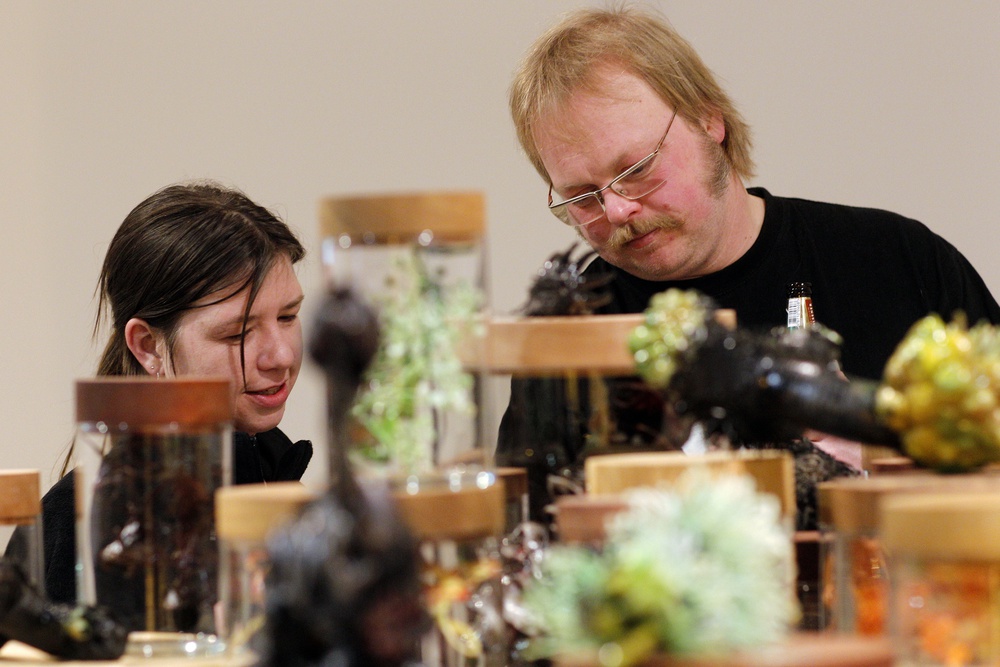There is a continual field of tension between that which is natural and that which is artificial in the mysterious works of Jeroen Kuster. He uses disposable materials to construct organisms that are the product of his imagination. They look like real fossils when they are presented as though in a natural history museum or a laboratory, thus requiring a pertinent reminder that in reality these creatures have never existed. In fact, the scales and shell-housing turn out to be little plastic spoons. Kuster gives his creations Latin names, as if he had discovered the creatures. While other artists at this exhibition are busy dissecting animals, Kuster is busy inventing new animals.
Although his work is carried out with impeccable precision, Kuster never works on the basis of a premeditated plan. The creatures are a combination of fantasy and anatomical knowledge. The artist imagines how their locomotion will take place and how they will procreate. Such questions form the point of departure of his work. Displayed on tables, the non-existent, lifeless creatures have such an air of naturalness that onlookers are compelled to think about nature and how it is manipulated in the age in which we live.

Jeroen Kuster at the opening of Transformation

